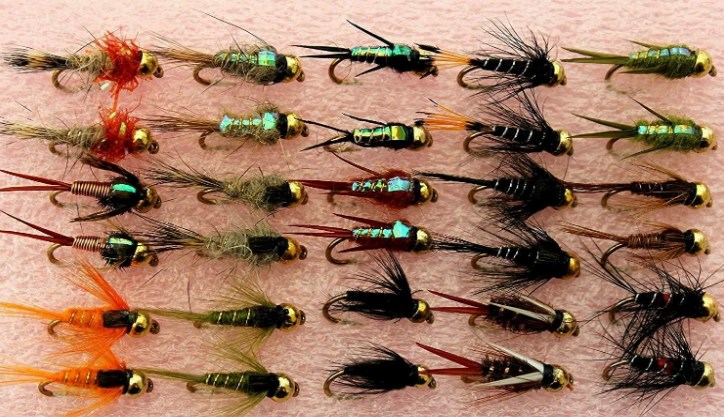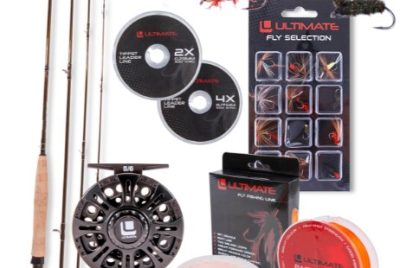Fly Fishing Fly Size Chart
Introduction
As a passionate fly angler, understanding the nuances of fly size is paramount for success on the water. Let’s dive into the world of fly fishing fly size charts and why they matter.
What is a fly fishing fly size chart?

A fly fishing fly size chart is a reference tool that categorizes flies based on their size, typically using numerical designations such as size 18, size 14, etc. It serves as a guide for anglers to select the appropriate fly size for different fishing conditions.
Importance of using the right fly size
Using the correct fly size is crucial for effectively imitating natural insects and enticing fish to strike. Matching the size of the fly to the prevailing conditions increases the likelihood of success and enhances the angler’s overall fishing experience.
Understanding Fly Sizes
Gain insight into the intricacies of fly sizes and how they are determined.
Anatomy of a fly
A fly consists of various components, including the hook, body, wings, and tail. The size of the fly refers to the length of the hook, typically measured in millimeters or inches.
How fly size is determined

Fly size is determined by the length of the hook shank, with smaller numbers indicating larger flies and larger numbers representing smaller flies. For example, a size 18 fly is smaller than a size 10 fly.
Factors to Consider
Explore the factors that influence the selection of the right fly size for a successful fishing outing.
Matching the hatch
Observing insect activity on the water and selecting a fly size that closely resembles the natural insects present is key to enticing fish to feed.
Water conditions
Water clarity, depth, and current speed influence the size of insects available to fish. Adjusting fly size based on these factors improves the chances of attracting bites.
Targeted fish species

Different fish species have varying preferences when it comes to prey size. Researching the preferred forage of the target species helps in selecting the appropriate fly size.
Common Fly Sizes and Their Uses
Explore the various fly sizes and their applications in fly fishing.
Tiny flies (size 18-22)
Tiny flies imitate small insects such as midges and gnats and are effective for fishing in calm, clear water conditions.
Small flies (size 14-16)
Small flies mimic insects like mayflies and caddisflies and are suitable for fishing in moderate water flows and depths.
Medium flies (size 10-12)

Medium-sized flies represent larger insects such as stoneflies and damselflies and are ideal for fishing in faster-moving water.
Large flies (size 6-8)
Large flies imitate sizable prey items like grasshoppers and baitfish and are effective for targeting larger fish species in turbulent water conditions.
Tips for Choosing the Right Fly Size
Discover practical tips for selecting the perfect fly size for any fishing scenario.
Observing insect activity
Pay attention to the types and sizes of insects present on the water’s surface and choose a fly size that closely matches the natural prey.
Consulting local experts

Seek advice from experienced anglers or local fly shops familiar with the area’s fishing conditions for recommendations on fly size selection.
Conclusion
In conclusion, mastering the art of selecting the right fly size is essential for achieving success in fly fishing. By understanding the factors influencing fly size selection and utilizing the guidance provided by fly fishing fly size charts, anglers can enhance their fishing prowess and enjoy memorable experiences on the water.
FAQs
Curious anglers often have questions about fly fishing fly size charts. Here are answers to some common inquiries to deepen your understanding.
1. Why is fly size important in fly fishing?
Fly size plays a crucial role in imitating natural insects and triggering feeding responses from fish. Choosing the right fly size increases the likelihood of attracting bites and catching fish.
2. How do I know which fly size to use?
Observing insect activity, assessing water conditions, and researching the preferred forage of the target fish species help in determining the appropriate fly size for a successful fishing outing.
3. Can I use the same fly size for different fish species?
While certain fly sizes may be effective for multiple fish species, it’s essential to consider the specific feeding habits and preferences of each species when selecting fly size.
4. Are there any general rules for matching fly size to water conditions?
As a general rule, smaller flies are suitable for calm, clear water conditions, while larger flies are better suited for turbulent or murky water. Adjusting fly size based on water clarity, depth, and current speed increases fishing success.
5. Can I modify flies to change their size?
Modifying flies, such as trimming materials or using different hook sizes, can alter their size to better match prevailing fishing conditions. Experimentation and observation are key to finding the perfect fly size for any situation.



